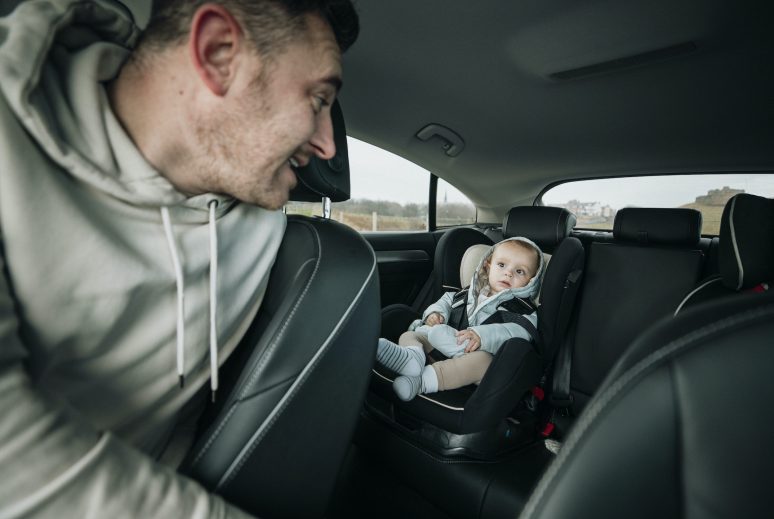How To: Build a Habit of Checking Your Car for Pets and Kids
How To: Build a Habit of Checking Your Car for Pets and Kids

Build the Habit of Checking Your Car for Kids and Pets
Every year in the United States, dozens of children under the age of 15 pass away from hot car death. A vast majority of those deaths are due to parents forgetting their children were in the car, followed by children getting into a car without their parents’ knowledge. As summer approaches and temperatures rise, so do the instances of child vehicular heatstroke deaths. It’s up to us, as caregivers, to prevent hot car deaths by building simple tasks into our auto pilot memory or add in reminders to our schedules to keep our children safe.
1. Leave It In the Back
It’s something we’ve all heard before, but when you have kids in your care, it bears repeating. Always leave something you must take with you when you leave the car in the backseat under the child car seat. This could be anything from your purse or work bag, to your keys, cell phone or wallet. The more you do this, the better the likelihood is that you’ll check the backseat of your car every day when you get out. And, if you’re checking the car seat, you’re less likely to leave a child in a car unattended.
2. Do a 360 Sweep
It used to be a regular habit to walk around your vehicle and check your tires before you drove anywhere, especially on a long distance trip. Nowadays, it’s not a common habit, but it should be along with checking in all of your windows as you walk. It might seem awkward, or a waste of time if you’re in a hurry, but ask yourself if the 10 extra seconds spent looking in your car is worth it to prevent a child dying in a hot car?
3. Maximize Your Alarms
Alarms can be set on everything these days. There are child safety alarms for pool gates and doors in your house, and alarms to secure your car. The best type of alarm is one most of us rely on throughout the day–our phone alarm. In your phone, you can set reminder alarms, wake up alarms, even alarms when it’s time for a meeting. Take two minutes now to go into your wake up alarms and set a secondary one titled, “Check the Car for Baby” for the time you typically arrive at work. Set another one on your work calendar and a third in your reminder list to go off when you exit your vehicle.
4. Keep Everyone Accountable
There’s a common proverb, “It takes a village to raise a child.” The same is true for preventing child vehicular heatstroke deaths. Both parents should confirm with one another when the child has been dropped off at daycare. Don’t assume drop off occurred if you don’t hear from your partner, or your child’s caregiver. Another option is to ask your childcare provider if they can call you if you’re late to drop off your child, so you know to check the child’s car seat.
5. Reminder Signage At Work
Talk to your office about installing signs on the doors or using a simple A-Frame sign at all entrances that prompt parents and caregivers to go back and double-check a child has not been left unattended in their vehicle. BabySav offers a variety of options for FREE, asking only those who can afford it to donate so we can continue to provide signage to businesses who ask for them.
6. Keep Your Cars Locked and Keys Out of Reach
Children are extremely curious, and insistent on independence from a young age. If car keys are easily accessible and/or they can get to the car by themselves, they can easily get locked in a car without their parent or caregiver knowing. Have you ever met a child who didn’t like to pretend they were driving? How about one who didn’t like to explore?
Hang your keys on a high peg or in a dish that’s out of reach, lock your car doors and your garage/front doors, and keep your child from getting into your car by themselves.
When outside temperatures rise, so do the internal temperatures in your cars. Getting locked in a parked car is no joke. Take these steps to build better habits of checking for children in your car, then share them with your friends and family, too. It takes all of us to prevent another child from dying of vehicular heatstroke.

